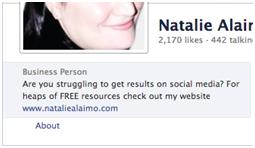While the charm of a cute local boutique will always exist, couch-shopping sprees in pajamas are more the norm these days.
No longer do you need to have a brick and mortar storefront to be a successful business, which can either be a blessing or a curse, it’s your call. There’s a certain advantage to having a place where you can interact with your customers face-to-face, but those relationships are now being taken to the world of social media and simply having an option for your customers to buy online just isn’t enough.
In the world of e-commerce you have to have it all, which sounds a lot like what we aim to do as women every day. Now’s the time to make plans, take action and step it up in the game of e-commerce, or else be left behind in the dust. By keeping these strategies in mind while laying out the groundwork, I have no doubt that your business will not only survive, but thrive too.
5 e-commerce survival strategies:
1. Have a blog and a refined voice
Your blog is the ideal space for replacing the typical in-store experience. You can go into further detail about your products or services, provide advice and opinions and use it as a launching point for conversations with your customers. When someone can’t physically pick up your product or see how your service works (unless you have a sample or free trial option) it’s important to showcase it through your blog so customers don’t feel like any part of the shopping experience is missing.
In addition to boosting your site’s SEO, your blog gives you the opportunity to share your voice via social media channels with ease. The more original content you post, the more people will find your site. Additionally, putting yourself out there on your blog helps your customers to feel more connected to you and to your business.
2. Make a great first impression and invest in a well-designed website
Have you ever been to a store that had shelves stuffed to the brim, or things piled on the floor, up high and everywhere in between? It’s a bit overwhelming and often results in a customer leaving empty-handed. In that aspect, websites aren’t dissimilar.
Although nearly every business has a website, the difference is a website that is easy-to-navigate, visually appealing and functional will bring in the money, whereas a bad website will just allow you to say “Yeah, of course we have a website.”
Having a website with a clear layout and an easy navigation system will keep customers on your site and more inclined to buy. If you’re not savvy enough to design your own site, work a designer’s services into your budget. Also, don’t be afraid of white space—with more white space comes less frustration and a better first impression.
3. Set yourself apart from other retailers with an authentic brand voice
Be original, post frequently and respond timely. These are three simple tips that will gain you a solid following on social media, which should be a big part of your marketing plan.
Not only does social media allow for immediate interaction with your customer base, it’s also free and an easy way to drive users directly to your website and blog. Make the most of the platforms you choose to take advantage of, respond to customer inquiries and gather feedback to show you’re accessible and transparent.
Additionally, by crafting a schedule of social media posts, you can shape your voice to fit your target audience’s wants and needs. By giving the people what they want, interest will be piqued and engagement will be increased.
4. Have a secure site; ensure no Heartbleed bug for your customers
Online shoppers know they’re going to fork over their personal information and credit card numbers if they want to make a purchase. And although we are much more comfortable paying for things with a couple clicks of a mouse (thanks for making it so easy, PayPal), if a site looks fishy, customers will opt to play on the safe side and not make the purchase.
It’s the same idea as driving through unfamiliar territory and choosing not to go into the poorly lit store on the desolate corner to get a snack and use the restroom. I don’t know about you, but I’ll usually just wait until the next brightly lit exit.
However, in the case of the Heartbleed bug, it took a long time to be discovered and sites that seemed secure really weren’t. Have a professional look into the security of your site, and if a breach does happen, communicate with and protect your customers immediately.
5. Be mobile-friendly
Not only are shoppers choosing to buy online more and more each year, the number of online shoppers using mobile devices has also soared. With information right at their fingertips, shoppers can turn into buyers anywhere with a Wi-Fi signal, but only if you have a mobile-friendly site.
A mobile-responsive site ensures that all of the qualities from your main site, like easy navigation and functionality, don’t get lost in translation when the desire to buy strikes your customers.
Now that you’ve taken a good hard look at your e-commerce site, determine what you’re currently working with and what needs to be worked on next. Maybe you already have a blog and social media channels set up and you post occasionally. Take your efforts a step further with an online overhaul, bringing your site completely on par with what customers expect.
If you’re starting from a blank canvas and your online business hasn’t debuted, go back to your plan and put these ideas into action for a strong start. Regardless of where you’re at in your online business adventure, use these strategies to see your traffic climb, and your revenue will be soon to follow.
Elaine Ngo is the VP of Marketing for HIDExtra, a leading e-commerce site helping customers with the most reliable HID kits on the market. With more than 5 years of experience in marketing, customer service and proving that girls can have fun with cars too, Elaine always takes a creative approach which shows through her innovative ideas. Graduating from the University of California Riverside in 2009, Elaine loves the sun in southern California and taking her golden retriever to the beach.









